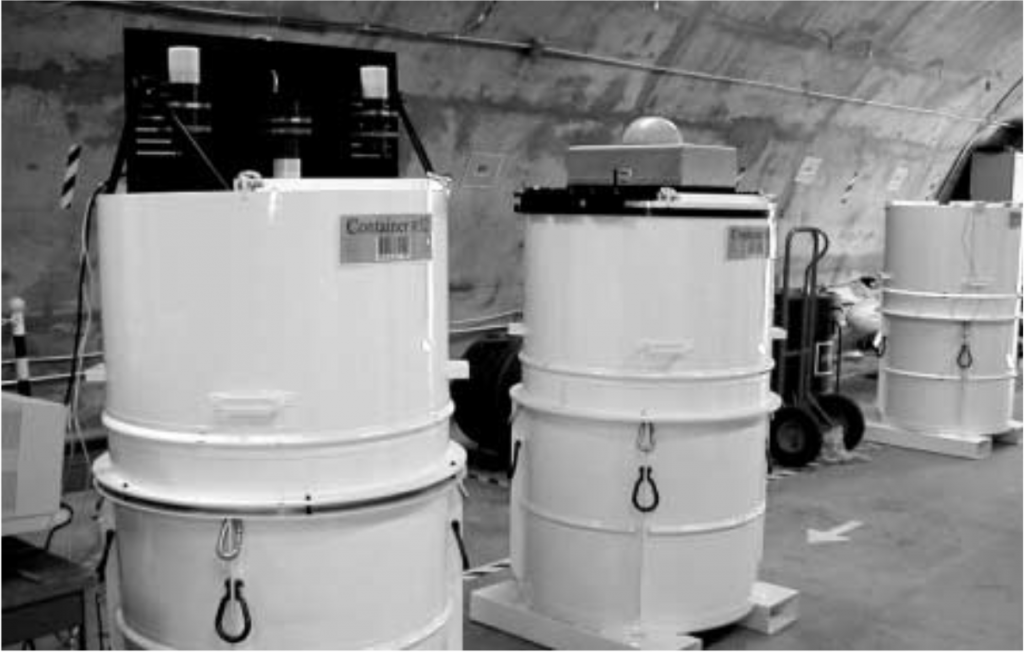RCC device designed to guard pits destined for dismantlement
Like a newborn separated from its mother at birth, a nuclear warhead removed from a weapons silo could risk an identity problem. Rather than sporting a wristband denoting its origin, a warhead destined for dismantlement may one day be monitored with a small device underdevelopment now, made chiefly from commercial,off-the-shelf components. This so-called “Radiation Continuity Checker” is designed to sit on top of the container where warheads await dismantlement. There, it would acquire a signature derived from the emitted radiation. Without storing any classified information, the monitor would simply report either that the contents are present and unperturbed or not, as the case may be, or that it is itself not functioning and needs repair.This application would help with arms control treaty verification, say its creators — Jim Lund, Bruce Brunett, Nathan Hilton, Adam Bernstein, and John Van Scyoc (all 8418). This technology, part of a larger program called the Weapon Monitoring Technology Project, was presented in October at the IEEE Nuclear Science Symposium in Lyon, France, which both Jim and Adam attended. Last month, the team also presented the prototype to an armed services sponsor in Albuquerque, receiving very positive feedback.The ability to use commercially available components is an advantage, Jim says, so that the technology will be inherently transparent to all users who rely upon it. With that in mind, the team is working with Curt Wessendorf (1732) on analog electronic systems, aiming to make all the signal processing shuttle through visible wired circuits instead of an integrated microprocessor.

The monitor is based on existing technology to detect radiation with sodium iodide scintilla-tors. The detectors convert gamma radiation into visible light, which is then converted to an electrical signal in photo multiplier tubes. Adam devised a suitable geometry using three photo-tubes to select photons from one direction, so background radiation is ignored without the need for heavy shielding. Nathan Hilton, a doctoral student at the University of Arizona, modeled the weapon-grade plutonium source and performed radiation transport calculations to help predict the detector response. Its lightweight and compact design are not the only convenient aspects of this device. It is also easy to set up in the field, with an initialization time (during which it establishes a bench-mark metric for future comparisons) as low as 15minutes. The device consumes little power and is expected to enjoy a low false alarm rate — a key feature in the context of international arms reduction treaties. The new device has performed well in tests and a field demonstration, using a surrogate radioactive material. In the coming months, the prototype will undergo rigorous radiation material tests using plutonium at Lawrence Livermore National Laboratory. The Radiation Continuity Checker has benefited from electronics and communications development work undertaken in a previous effort that Jim was involved in, the Integrated Nuclear Mate-rials Monitoring (INuMM) project. INuMM aimed to provide electronic tag-like capabilities in an embeddable package for use in future weapons or monitoring systems.